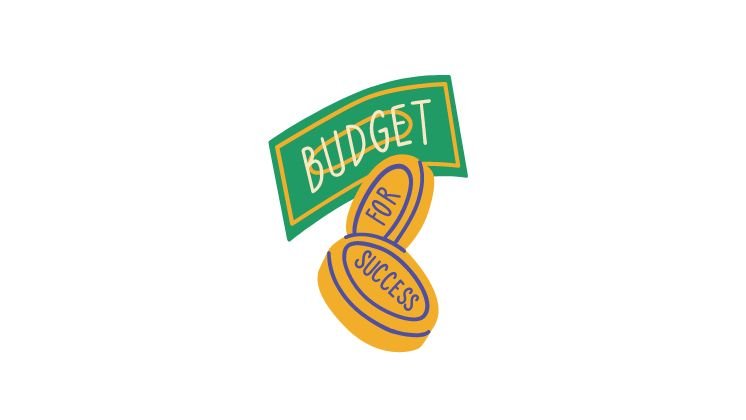Are you new to investing and wondering where to start? It can be overwhelming to try and navigate the world of investments, especially if you're just getting started. But with a little bit of knowledge and planning, it's possible to develop a successful investment strategy that can help you grow your wealth over time.
In this blog, we'll go over some basic investment strategies for beginners, including setting financial goals, understanding your risk tolerance, and diversifying your portfolio. We'll also cover some of the different types of investments available, such as stocks, bonds, and mutual funds, and provide tips on seeking professional advice and continuing to educate yourself.
Whether you're just starting to save for retirement or looking to grow your savings in other ways, these investment strategies can help you get on the right track.
Introduction to investing and the importance of starting early

A brief overview of the different types of investments
There are many different types of investments that individuals can choose from, each with its own unique set of characteristics and risks. Some common types of investments include stocks, bonds, and mutual funds.
Stocks represent ownership in a company and can be bought and sold on the stock market. When you own a stock, you have the potential to earn money through dividends (payments made by the company to its shareholders) and through capital appreciation (an increase in the value of the stock over time).
Bonds are essentially loans made to a government or corporation, and investors earn money through interest payments made by the borrower.
Mutual funds are investment vehicles that pool together money from many investors and use it to buy a diversified portfolio of stocks, bonds, and other securities. Mutual funds can offer a convenient way for beginners to gain exposure to a variety of different investments, as they are managed by professional fund managers.
The Benefits of Investing
Investing can be a great way to potentially earn higher returns and grow your wealth over time. When you invest your money, it has the potential to grow through the earning of interest or dividends, or by appreciation in the value of the asset.
This can lead to a greater return on your investment compared to leaving your money in a savings account or other low-risk, low-return options. Additionally, investing can help you to diversify your portfolio and potentially reduce the overall risk of your financial assets.
By investing in a variety of assets, you can spread out your risk and potentially reduce the impact of any one investment performing poorly. Investing also allows you the opportunity to grow your wealth over time, as the value of your investments may increase as the market or individual assets perform well.
Overall, the benefits of investing can include the potential for higher returns, the opportunity to grow your wealth over time, and the ability to diversify and potentially reduce risk in your portfolio.
The importance of starting to invest early, even with small amounts

Starting to invest early, even with small amounts, can be incredibly important for a number of reasons. One of the main benefits of starting to invest early is the power of compound interest.
Compound interest is the interest that is earned on both the principal amount of an investment and the accumulated interest from previous periods. The longer you allow your investments to grow, the more time they have to compound, potentially leading to higher returns over time.
This is why it is often recommended to start investing as early as possible, even if you can only contribute small amounts at first. Additionally, starting to invest early can also help you to take advantage of long-term market trends and potentially benefit from the growth of the overall economy.
Finally, starting to invest early can also help you to build good financial habits and develop a strong foundation for your long-term financial goals. Overall, the importance of starting to invest early, even with small amounts, cannot be overstated, as it can help you to take advantage of compound interest, benefit from long-term market trends, and build good financial habits.
Setting Financial Goals and Creating a Budget
The Importance of Setting Specific Financial Target

Setting specific, achievable financial goals is an important step in creating a successful financial plan. When you set financial goals, you are able to clearly define what you want to accomplish with your money and create a roadmap to get there.
This can help you to stay motivated and focused on your financial journey, as you are able to track your progress and see how you are making progress towards your goals. Specific and achievable financial goals also help you to create a plan that is tailored to your unique financial situation and priorities, rather than trying to follow a one-size-fits-all approach.
By setting specific, achievable financial goals, you are able to make informed decisions about how to allocate your resources and make the most of your financial opportunities. Overall, the importance of setting specific, achievable financial goals cannot be overstated, as it helps you to create a customized financial plan that is tailored to your unique situation and goals.
Tips for Creating a Budget to Allocate to Investing

Creating a budget and determining how much to allocate to investing can be a valuable step in managing your finances and reaching your financial goals. Here are a few tips to consider when creating a budget and deciding how much to invest:
- Determine your financial goals: Before you can create a budget and allocate funds to investing, it is important to know what you are trying to achieve financially. Do you want to save for retirement, pay off debt, or build an emergency fund? Knowing your financial goals can help you to prioritize your spending and allocate your resources accordingly.
- Track your expenses: In order to create a budget, you will need to have a good understanding of how you are currently spending your money. Keep track of your expenses for at least a month to get a good understanding of where your money is going. This can help you to identify areas where you may be able to cut back or save more.
- Determine your income and expenses: Once you have a good understanding of your current spending habits, determine your total income and all of your necessary expenses, such as housing, transportation, and groceries. This will give you an idea of how much money you have available to allocate to investing and other financial goals.
- Decide on an appropriate allocation for investing: There is no one-size-fits-all answer to how much you should allocate to investing, as it will depend on your individual financial situation and goals. However, as a general rule, it is recommended to save and invest at least 10-15% of your income for the long term.
- Review and adjust your budget regularly: Your financial situation and goals may change over time, so it is important to review and adjust your budget regularly to ensure that it is still aligning with your current needs and goals.
The Role of Risk Tolerance in Investment Decisions

Risk tolerance is an important factor to consider when making investment decisions, as it can impact the types of investments that are suitable for you and your financial goals. Risk tolerance refers to an individual's willingness to accept fluctuations in the value of their investments in exchange for the potential to earn higher returns.
Investors with a high-risk tolerance may be more comfortable with investments that have the potential to fluctuate significantly in value and may be willing to accept a higher level of risk in exchange for the potential for higher returns.
On the other hand, investors with a low-risk tolerance may prefer investments with a more stable value and may be willing to accept lower potential returns in exchange for a lower level of risk. It is important to carefully consider your own risk tolerance when making investment decisions, as choosing investments that are not suitable for your risk tolerance level can lead to undue stress and may not align with your financial goals.
Overall, risk tolerance plays a key role in investment decisions, as it determines the types of investments that are suitable for your individual circumstances and risk tolerance level.
Basic Investment Options for Beginners
An Overview of Low-Risk Investment Options
Low-risk investment options, such as savings accounts and certificates of deposit (CDs), can be a good choice for investors who are looking to preserve capital and minimize the potential for significant losses. Savings accounts and CDs are both considered to be low-risk investments because they offer relatively stable returns and are insured by the Federal Deposit Insurance Corporation (FDIC) up to $250,000 per depositor.
Savings accounts are offered by banks and credit unions and allow investors to earn a small amount of interest on their deposits. The interest rate on savings accounts is generally low, but they offer the convenience of easy access to funds and the ability to withdraw money at any time.
Certificates of deposit (CDs) are also offered by banks and credit unions and involve the investor depositing a set amount of money for a fixed period of time, typically ranging from a few months to several years. CDs generally offer higher interest rates than savings accounts, but the money is locked in for the duration of the term and may be subject to early withdrawal penalties if the investor needs to access the funds before the term ends.
Overall, low-risk investment options such as savings accounts and CDs can be a good choice for investors who are looking to preserve capital and minimize risk, but they may not offer the potential for significant returns compared to higher-risk investments.
An Introduction to More Aggressive Options
Stocks and mutual funds are examples of more aggressive investment options that have the potential to offer higher returns but also come with a higher level of risk. Stocks represent ownership in a publicly traded company and can be bought and sold on a stock exchange. The value of a stock is determined by a variety of factors, including the company's financial performance and market conditions, and can fluctuate significantly over time.
Mutual funds are a type of investment vehicle that pools money from multiple investors and uses it to buy a diversified portfolio of stocks, bonds, or other securities. Mutual funds offer the advantage of providing diversification and professional management, but they also carry the risk of loss and are subject to market fluctuations.
While stocks and mutual funds have the potential to offer higher returns compared to low-risk options such as savings accounts and CDs, they also come with a higher level of risk and are not suitable for all investors. It is important to carefully consider your own risk tolerance and financial goals before deciding whether to invest in more aggressive options such as stocks and mutual funds.
The pros and cons of different investment options

There are a variety of investment options available to investors, each with its own set of pros and cons. Here is a brief overview of some common investment options and their respective benefits and drawbacks:
- Savings accounts: Low-risk investment option with easy access to funds and FDIC insurance up to $250,000 per depositor. However, returns are generally low and may not keep up with inflation.
- Certificates of deposit (CDs): Low-risk investment option with the potential for higher returns than savings accounts. However, the money is locked in for a fixed term and may be subject to early withdrawal penalties.
- Stocks: Potential for high returns, but also come with a higher level of risk and are subject to market fluctuations.
- Mutual funds: Offer diversification and professional management, but also come with the risk of loss and are subject to market fluctuations.
- Bonds: Low-risk investment option with the potential for moderate returns. However, the value of bonds can be impacted by interest rate changes.
- Real estate: Potential for long-term appreciation and the ability to generate rental income. However, real estate investments can be expensive and time-consuming to manage.
It is important to carefully consider the pros and cons of different investment options and choose those that align with your individual financial goals and risk tolerance. It may also be helpful to consult with a financial advisor or professional to help you determine the best investment strategy for your needs.
Diversifying Your Investment Portfolio
The importance of diversification in reducing risk
Diversification is an important tool for reducing risk and maximizing returns. By investing in a variety of different asset classes and industries, an investor can reduce their exposure to any one particular market or sector. This can help to minimize the impact of any negative events or changes that may affect a specific asset or investment.
Diversification can also help to smooth out the overall volatility of an investment portfolio, as different asset classes may perform differently in different market conditions.
For example, while stocks may perform poorly in a recession, bonds may hold their value or even increase in value. By including both stocks and bonds in a diversified portfolio, an investor can potentially reduce the overall risk of their investments. Overall, diversification is an important element of a successful investment strategy, as it can help to reduce risk and maximize returns over the long term.
Strategies for diversifying your portfolio
There are many strategies that investors can use to diversify their portfolios and reduce risk. One common approach is to invest in a mix of different asset classes, such as stocks, bonds, and cash. This can help to spread out the risk of the portfolio, as different asset classes may perform differently in different market conditions.
For example, stocks may perform well in a strong economy, while bonds may hold their value or even increase in value in a recession. By including both stocks and bonds in a portfolio, an investor can potentially reduce the overall risk of their investments.
Another strategy for diversifying a portfolio is to invest in a range of different industries and sectors. This can help to reduce the impact of any negative events or changes that may affect a specific industry or sector. For example, if the technology sector experiences a downturn, it will have less of an impact on an investor's overall portfolio if the investor has diversified their holdings to include other industries, such as healthcare or consumer goods.
Investors can also diversify their portfolios by investing in assets that are geographically diverse. This can help to reduce the impact of any negative events or changes that may affect a specific region or country. For example, if the economy of a particular country experiences a recession, it will have less of an impact on an investor's overall portfolio if the investor has diversified their holdings to include assets from other countries.
Overall, there are many strategies that investors can use to diversify their portfolios and reduce risk. By investing in a mix of different asset classes, industries, and regions, investors can potentially minimize the impact of any negative events or changes on their investments.
Seeking professional advice and continuing to educate yourself
The importance of seeking guidance
Seeking guidance from a financial advisor or professional is an important step in developing a successful investment strategy. Financial advisors are trained to analyze financial markets, assess risks and opportunities, and provide guidance on investment decisions. They can help investors to identify their financial goals and develop a plan to achieve them, taking into account factors such as the investor's risk tolerance, time horizon, and financial resources.
There are several reasons why seeking guidance from a financial advisor can be beneficial for investment strategies. First, financial advisors have access to a wide range of investment products and can help investors to identify the most appropriate options for their needs. They can also provide valuable insights into the performance of different asset classes and sectors, and help investors to understand the risks and potential rewards of different investments.
Second, financial advisors can help investors to stay on track with their investment goals and make necessary adjustments to their portfolios as market conditions change. They can provide regular reviews and updates to ensure that the investor's portfolio is aligned with their financial objectives and risk tolerance.
Overall, seeking guidance from a financial advisor or professional can be an important step in developing a successful investment strategy. Financial advisors can provide valuable insights, expertise, and support to help investors make informed and effective investment decisions.
Tips for finding a reputable advisor
Finding a reputable financial advisor is an important step in developing a successful investment strategy. Here are some tips for finding a reputable advisor and what to consider when working with one:
- Look for credentials: A financial advisor should have the appropriate credentials, such as a CFP (Certified Financial Planner) or CFA (Chartered Financial Analyst) designation. These credentials indicate that the advisor has completed a rigorous course of study and passed a professional examination in financial planning or investment management.
- Research the advisor's background: It is important to research the advisor's background, including their education, experience, and any disciplinary actions or sanctions. This information should be available on the advisor's professional website or through regulatory bodies such as the Securities and Exchange Commission (SEC) or the Financial Industry Regulatory Authority (FINRA).
- Consider the advisor's fee structure: Financial advisors may charge a fee for their services, either as a percentage of the assets they manage or as a flat fee. It is important to understand the advisor's fee structure and determine whether it is appropriate for your financial situation.
- Ask for references: Ask the advisor for references or speak with their current clients to get a sense of their experience working with the advisor.
- Clearly define your financial goals: Clearly define your financial goals and objectives with the advisor so that they can tailor their recommendations and advice to meet your specific needs.
Resources for continuing to learn about investing and staying up-to-date on market trends
There are many resources available for continuing to learn about investing and staying up-to-date on market trends. Some options include:
- Financial news websites and publications: These sources provide current information on financial markets, economic trends, and specific companies or industries. Some examples include The Wall Street Journal, CNBC, and Bloomberg.
- Online investment courses and programs: Many universities and other educational institutions offer online courses and programs in investment and finance. These can provide a comprehensive overview of financial markets and investment strategies.
- Professional associations and organizations: Joining a professional association or organization, such as the CFA Institute or the Financial Planning Association, can provide access to resources, events, and networking opportunities related to investing and finance.
- Financial advisors and professionals: Working with a financial advisor or professional can provide ongoing support and guidance for your investment decisions. They can provide insights and recommendations based on their knowledge of financial markets and your specific financial situation.
Conclusion
In conclusion, there are many factors to consider when developing a successful investment strategy. Diversification is an important tool for reducing risk and maximizing returns and can be achieved by investing in a mix of different asset classes, industries, and regions.
Seeking guidance from a financial advisor or professional can also be beneficial, as they can provide valuable insights, expertise, and support to help investors make informed and effective investment decisions.
Finally, it is important for investors to stay up-to-date on market trends and continue learning about investing in order to make informed decisions. By considering these factors and using the various resources available, investors can develop a solid investment strategy that can help them achieve their financial goals.
FAQs
What are the 4 investment strategies?
There are many different investment strategies that investors can use to achieve their financial goals. Here are four common investment strategies:
Growth investing: Growth investing involves buying stocks or other assets that are expected to increase in value over the long term. Investors who pursue this strategy typically focus on companies with strong growth potential, such as those with high earnings growth or market share.
Income investing: Income investing involves buying stocks or other assets that generate regular income, such as dividends or interest payments. Investors who pursue this strategy typically focus on stable, established companies with a history of paying dividends.
Value investing: Value investing involves buying stocks or other assets that are perceived to be undervalued by the market. Investors who pursue this strategy look for companies that are trading at a discount to their intrinsic value, with the expectation that the market will eventually recognize their value and the stock price will increase.
Balanced investing: Balanced investing involves investing in a mix of different asset classes, such as stocks, bonds, and cash. This strategy aims to achieve a balance between risk and return, and is often used by investors who have a moderate risk tolerance.
What are 5 tips to beginner investors?
Here are five tips for beginner investors:
Start early: One of the most important factors in successful investing is time. By starting to invest early, you can take advantage of compound interest, which can help your money grow over time.
Diversify your portfolio: Diversifying your portfolio is an important tool for reducing risk and maximizing returns. Consider investing in a mix of different asset classes, such as stocks, bonds, and cash.
Set financial goals: Clearly define your financial goals and objectives before you start investing. This will help you to identify the appropriate investment strategy and make informed decisions about where to allocate your money.
Educate yourself: Take the time to learn about different investment options and the risks and rewards associated with each. This can help you to make informed and effective investment decisions.
Seek professional guidance: If you are new to investing, it can be helpful to seek guidance from a financial advisor or professional. They can provide valuable insights, expertise, and support to help you achieve your financial goals.
What Are the Best Types of Investments for Beginners?
There are many types of investments that may be suitable for beginners, depending on their financial goals and risk tolerance. Here are a few options to consider:
Mutual funds: Mutual funds are investment vehicles that pool money from many investors and invest in a diverse portfolio of stocks, bonds, or other assets. They can be a good option for beginners because they offer diversification and professional management at a relatively low cost.
Exchange-traded funds (ETFs): ETFs are similar to mutual funds, but they are traded on stock exchanges and can be bought and sold throughout the day like individual stocks. They offer diversification and professional management at a relatively low cost.
Index funds: Index funds are a type of mutual fund or ETF that tracks the performance of a specific market index, such as the S&P 500. They offer diversification and low management fees.
Savings accounts and certificates of deposit (CDs): Savings accounts and CDs are relatively low-risk investments that offer a fixed rate of return. They may be a good option for beginners who are risk-averse or have short-term financial goals.
Treasury bonds: Treasury bonds are debt securities issued by the U.S. government. They are considered to be a very low-risk investment, but also offer relatively low returns.

Hi, I’m Durgesh Nayak, and I hold a Master’s degree in Commerce with over five years of experience in the banking sector. I am certified with JAIIB and CAIIB, which has given me a solid foundation in financial knowledge. For the past four years, I’ve been sharing my passion for finance through writing money and finance blogs.
My goal is to make complex financial topics accessible and actionable, helping you improve your personal finance, investment strategies, and overall financial planning.

